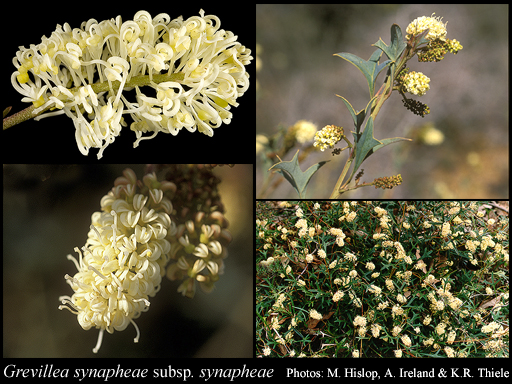- Conservation Code
- Not threatened
- Naturalised Status
- Native to Western Australia
- Name Status
- Current
Prostrate to spreading, lignotuberous shrub, 0.2-0.6(-1.1) m high. Fl. white-cream-yellow, Jul to Oct. Sand, gravel, laterite, granite.

Scientific Description
Shrubs, 1.5 m high; branchlets glabrous, not glaucous. Leaves alternate, 40-180 mm long, 1-6 mm wide, hairy or glabrous, on the abaxial surface, the hairs straight; lamina flat, clearly widest above the middle, once divided, pinnately divided or tripartitely divided, deeply divided or divided to the midrib; lobes 5-20 mm long, 5-10 mm wide, the margins flat or recurved. Inflorescences axillary or terminal, white or cream; pedicels 1.5-2.5 mm long. Perianth 3-4 mm long; tepals all free after flower opens, glabrous; ovary glabrous, stipitate, the stipe 0.5-1 mm long; pistil 4-6 mm long, white or cream, pollen presenter conical, style glabrous. Follicles glabrous, not viscid, dehiscent, 8-13 mm long. Flowers in July, August, September or October. Occurs in the South-west (SW) Botanical Province(s), in the Geraldton Sandplains (GS), Swan Coastal Plain (SWA), Avon Wheatbelt (AW) or Jarrah Forest (JF) IBRA subregion(s).
Distribution
- IBRA Regions
- Jarrah Forest, Swan Coastal Plain.
- IBRA Subregions
- Northern Jarrah Forest, Perth.
- Local Government Areas (LGAs)
- Armadale, Beverley, Chittering, Gosnells, Kalamunda, Mundaring, Northam, Perth, Swan, Toodyay, York.